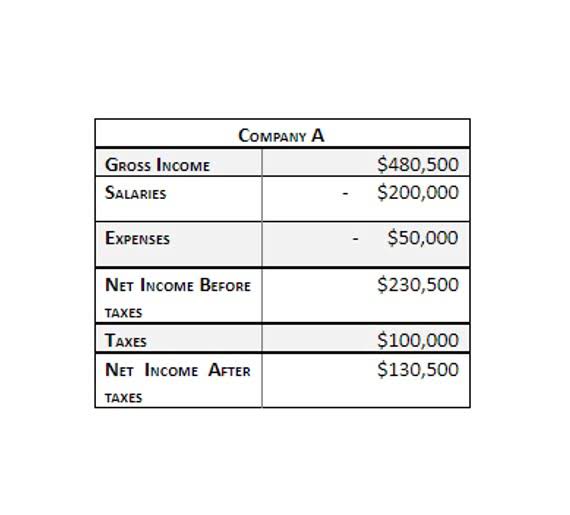
Businesses must use accrual accounting if it is publicly traded or receiving federal funding. Some investors also prefer accrual accounting since it more accurately records income and expenses when they were earned. In this guide, we’ll cover the steps to get started with law firm accounting. We’ll also share tips, resources from our team, and ways our law firm accounting software can help you easily manage accounting tasks while boosting productivity and maintaining compliance. Under the accrual accounting method, certain long-term assets are depreciated over a number of years on the company’s financial statements. Amortization involves the application of a similar concept to intangible assets.

Operating Cash and Capital
Whether you mismanage the accounts, put funds in the wrong account, accidentally use funds, or fail to report correctly, trust accounting errors are a big deal in accounting for law firms. Trust accounting mistakes can lead to penalties, suspension, or even losing the right to practice law. The income statement, also known as the profit and loss statement, summarizes your law firm’s revenue and expenses over a specific period, ultimately showing your net income. This statement helps you assess your firm’s profitability and overall financial performance.
What to look for in a legal accountant
- Specifically, your firm needs software that can properly handle retainer funds, from the initial deposit through the transfer of earned funds into the operating account.
- For example, only using parent categories such as payroll won’t allow you to see enough data to make useful decisions about staff costs.
- And the transaction records feed into the firm’s balance sheet and income statement.
- Net income is derived by taking the earnings before tax value and subtracting tax expenses.
- This is because a professional legal bookkeeper and accountant can help you manage your firm’s revenue and ensure your firm’s financial transactions are handled ethically and accurately.
- This can cause serious issues and stunt your firm’s growth (more on that later).
The fully diluted share count represents the basic shares plus the additional shares that could be available from the conversion of stock options, warrants, and other convertible securities. Below the net income line item, companies generally will provide earnings per share, or EPS. This is because it is affected by a company’s capital structure, rather than just being impacted by a company’s operations. Access real-time intent data to measure your success and maximise engagement. All these tasks require attention to detail and a deep understanding of the legal industry’s unique requirements.
Managing your firm: How to create a sustainable financial plan
- Firm account records, however, track the firm’s own financial transactions and expenses (such as salaries, rent, and utilities).
- Double-entry accounting is a system of bookkeeping where every entry to an account (i.e., every financial transaction) requires a corresponding and opposite entry to a different account.
- The sample income statement provided for ABC Law Firm represents the financial performance of the firm over a specific period, in this case, the year ended December 31, 20XX.
- It may still be necessary to track receivables or payables for informational purposes, but they will not appear on your financial statements.
- For example, you may invest in professional development opportunities if your goal is to expand your team’s skill sets.
- If your chart of accounts is not set up correctly, your transactions will not balance and the records for each account could be inaccurate.
For example, only using parent categories such as payroll won’t allow you to see enough data to make useful decisions about staff costs. If you have too many sub-accounts, the data may be too small to be useful. After the initial processes have been set up and given the green light from a certified accountant, consider using technology to passively run What is bookkeeping your systems. For example, payroll automation can be made simple by using legal practice management software, which easily integrates with payroll applications. Having a reliable but flexible cash flow is integral to your firm’s success. It’s tough for any business to manage cash flow, and lawyers have specific challenges on top of this.


By analyzing the cash flow statement, the law firm can assess its ability to meet short-term obligations, make strategic investments, and maintain financial stability. This information is vital for effective financial planning and decision-making. In the income statement, revenues are the earnings generated from the firm’s primary activities, such as providing legal and consulting services. Revenues can also include secondary income streams, such as interest earned on investments, but these are not included in law firm chart of accounts the sample provided. The sample income statement provided for ABC Law Firm represents the financial performance of the firm over a specific period, in this case, the year ended December 31, 20XX.
Costs of Services and Operating Expenses

Some jurisdictions may require you to complete https://www.bookstime.com/ financial reporting periodically. For example, the ABA requires firms to do three-way trust reconciliation at least quarterly. Lastly, you should also understand how business taxes work, what you’re responsible for, and potential deductions your firm can benefit from. Eligibility for tax obligations and deductions varies based on the state(s) your firm operates in. If you haven’t completed this first step, check out our guide on starting a law firm for more in-depth guidance.